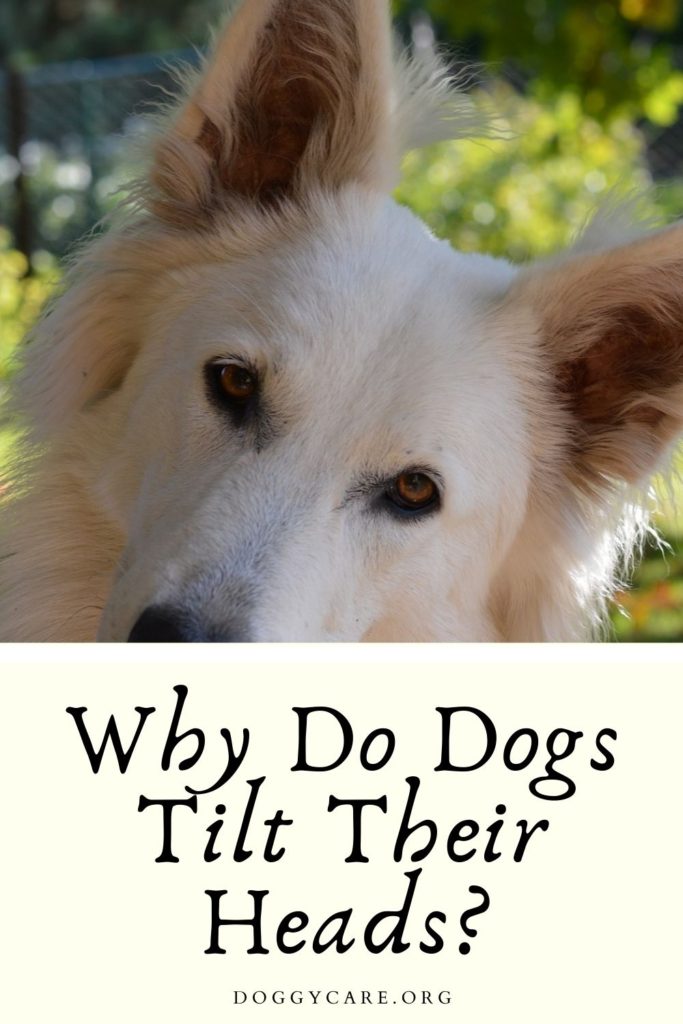Why Do Dogs Tilt Their Heads, Especially When You Talk To Them?

Isn’t it heart-melting whenever we see our dog tilt his head? This is indeed one of the cutest things our dogs can do that would make us smile. Along with the head-tilt are curious eyes, and a cheerful face. They usually do this when they hear an interesting sound. But probably, you are also curious about why do dogs tilt their heads. Is it something scientific? Or is it our puppy’s normal behavior? When do our dogs tilt their heads and what are the reasons?
Why Do Dogs Tilt Their Heads, Especially When You Talk To Them?
1) To listen
This could be the most obvious reason why our puppies tilt their heads. Sounds of chimes, doorbells, horn, squeaky toys, are some of the most common sounds that make their head tilt.
When do they do this?
When there is an interesting sound
As mentioned above, our dogs like to listen to the sound of doorbells, squeaky toys, horns, and chimes. They find it interesting and tilting their head shows their curiosity about these sounds. If we can observe when our dogs do this, their face seems to look curious, too.
When there is a loud, annoying sound
Dogs also tilt their heads when they hear a noise. According to the American Kennel Club, dogs have incredible hearing since they have a higher frequency of sound which means they are more sensitive to sounds than men. They tilt their head as a reaction to the noise they hear. It may be annoying and a pain in their ears, so it’s better to take it away from them.
When they hear us talking to them
We talk to our dogs like the way we are talking to a kid, right? Then, they try to listen to us carefully by tilting their heads with their ears open. It was stated in Hannah K Worsley and Sean J. O’Hara in their study, that 19 referential gestures conform to the five features of referential signaling. When our dogs hear us speaking to them they are like readjusting their antenna (their ears) to listen more intently and capture every word we utter.
2) To Empathize
Dogs are naturally empathetic animals. in fact, they have the ability to recognize human emotions. A data is presented by Marcello Siniscalchi, Serenella d’Ingeo & Angelo Quaranta in their research, shows that the dogs displayed a higher behavioral and cardiac activity in response to the human facial pictures showing clear emotional arousal . Thus, head tilting is one of their responses to perceiving our emotions.
When do our dog tilt their heads when you talk to them?
When we show them a negative facial expression
As their way of empathizing with us, they tilt their heads when they see us sad, angry, or afraid. They are trying to understand how do we feel at the moment and why do we look different.
When we show them a positive facial expression
Not only when we are sad our dogs empathize but also when we are happy. They respond to our positive emotions by tilting their heads. This usually comes with a waggling tail and droopy ears.
3) To see us/something better
Dogs with longer faces tend to tilt their heads when they want to see something clearly. Their nose gets in the way that may block certain parts of their vision.
When do they do this?
When they see something interesting
Like humans, dogs can be curious if they see someone/something new to their sights. They will try to pick up more visual cues by tilting their heads to get a better picture of what they see.
When they are looking for someone/something
Have you tried to play hide and seek with your dog? look at how he tilts his head when he’s almost near you. Our dogs want to make sure that they have found who or what they are looking for and tilting their head is their way of recognition.
Is there something to be worried about?
As owners, we will be able to know if our dogs are acting strange. Frequent tilting of the head, and shaking it at the same time could be an indication of a health problem. An ear infection is the most common ear problem among dogs. Usually, when our dog is experiencing this, he will tilt the side of the head that has the problem. and may even scratch it with his foot. If that happens, it’s best to go to the nearest vet for the proper diagnosis and treatment.